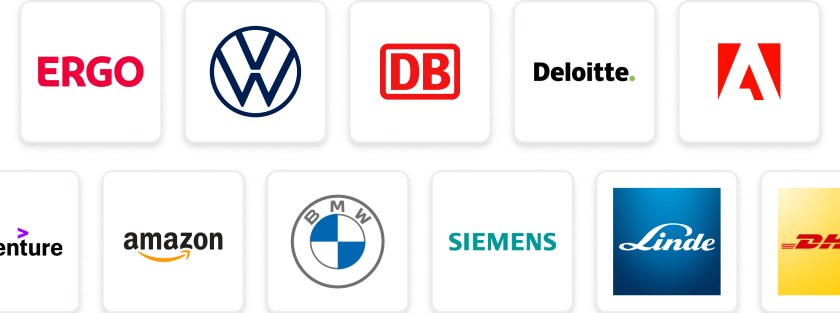At a Glance
- Tasks: Design and develop electromechanical products with a global engineering team.
- Company: Join a century-old company known for trusted safety solutions in high-risk sectors.
- Benefits: Enjoy hybrid working, flexible hours, and a pension scheme matched up to 10.5%.
- Why this job: Be part of innovative projects that ensure safety while collaborating with a diverse team.
- Qualifications: Master's in Electrical/Electronic Engineering preferred; expertise in electronic design and CAD required.
- Other info: Occasional travel to support global operations; referral fees available for suitable candidates.
The predicted salary is between 28800 - 43200 £ per year.
For more than 100 years, the company has been delivering trusted safety solutions. Backed by a team of specialists who understand the safety challenges in modern industrial settings, these products are engineered for reliability and protection. Their comprehensive range of safety systems is built to provide high-quality interlocks, ensuring the safety of both people and equipment in high-risk sectors like energy, manufacturing, industry, and transportation on a global scale.
Info About What The Electronics Design Engineer Role Entails
The Electronics Design Engineer role involves designing, developing, and managing electromechanical products within a global engineering team. The position requires technical expertise in electronic design and mechanical exposure, alongside skills in project management, collaboration with stakeholders, and adherence to safety standards. The engineer will contribute across the full product lifecycle, ensuring designs meet international safety regulations while fostering innovation and teamwork. The role also demands proficiency in CAD tools, risk assessment, and design-for-manufacture processes, with occasional travel to support global operations.
Essential Requirements Of a Electronics Design Engineer
- Degree in Electrical/Electronic Engineering (Master’s preferred).
- Expertise in Electronic Design.
- Expertise in Analogue Electronics.
- Experience/Exposure to Mechanical Engineering.
- Proficiency with CAD.
- Experience in design-for-manufacture and safety product design.
- Occasional travel for global operations.
Benefits
- Hybrid Working.
- Flexible hours.
- Pension Scheme Matched up to 10.5%.
- Share Scheme.
- Cycle to work.
- 25 Days + Bank Holidays.
If you feel you are suitable and interested in this role, APPLY NOW with an up to date CV. We also pay referral fees if you can suggest another suitable person that isn’t already known to us.
April Quest Ltd acts as both an Employment Business and Employment Agency and complies with the Conduct of Employment Agencies and Employment Businesses Regulations Act 2003. We take your privacy seriously; our Privacy Policy can be viewed at aprilquest.com/privacy .
#J-18808-Ljbffr
Electronics Design Engineer employer: Pitini & Associates, LLC
Contact Detail:
Pitini & Associates, LLC Recruiting Team
StudySmarter Expert Advice 🤫
We think this is how you could land Electronics Design Engineer
✨Tip Number 1
Familiarize yourself with the latest trends in electronic design and safety standards. This will not only help you during interviews but also show your passion for the field and your commitment to staying updated.
✨Tip Number 2
Network with professionals in the industry, especially those who work in safety solutions or related fields. Attend relevant conferences or webinars to make connections that could lead to referrals or insider information about the role.
✨Tip Number 3
Prepare to discuss specific projects where you've applied your skills in electronic design and mechanical engineering. Highlight your experience with CAD tools and design-for-manufacture processes to demonstrate your hands-on expertise.
✨Tip Number 4
Be ready to showcase your project management skills and how you've collaborated with stakeholders in past roles. This is crucial for the Electronics Design Engineer position, as teamwork and communication are key components of the job.
We think you need these skills to ace Electronics Design Engineer
Some tips for your application 🫡
Understand the Role: Take the time to thoroughly read the job description for the Electronics Design Engineer position. Make sure you understand the key responsibilities and requirements, such as expertise in electronic design and mechanical exposure.
Tailor Your CV: Customize your CV to highlight relevant experience and skills that align with the job requirements. Emphasize your expertise in electronic design, CAD proficiency, and any project management experience you have.
Craft a Strong Cover Letter: Write a compelling cover letter that showcases your passion for safety solutions and your ability to contribute to the team. Mention specific projects or experiences that demonstrate your qualifications for the role.
Highlight Team Collaboration: Since the role involves working within a global engineering team, be sure to mention any past experiences where you successfully collaborated with stakeholders or worked in a team setting. This will show your ability to foster innovation and teamwork.
How to prepare for a job interview at Pitini & Associates, LLC
✨Showcase Your Technical Expertise
Be prepared to discuss your experience in electronic design and analogue electronics. Highlight specific projects where you applied your technical skills, and be ready to explain your design choices and the impact they had on safety and reliability.
✨Demonstrate Collaboration Skills
Since the role involves working within a global engineering team, emphasize your ability to collaborate with stakeholders. Share examples of how you've successfully worked with cross-functional teams to achieve project goals.
✨Familiarize Yourself with Safety Standards
Understand the international safety regulations relevant to the products you'll be designing. Be ready to discuss how you ensure compliance in your designs and any experiences you have with risk assessment.
✨Prepare for Design Tools Discussion
Proficiency in CAD tools is essential for this role. Be prepared to talk about your experience with CAD software, including specific projects where you utilized these tools effectively in the design-for-manufacture process.
